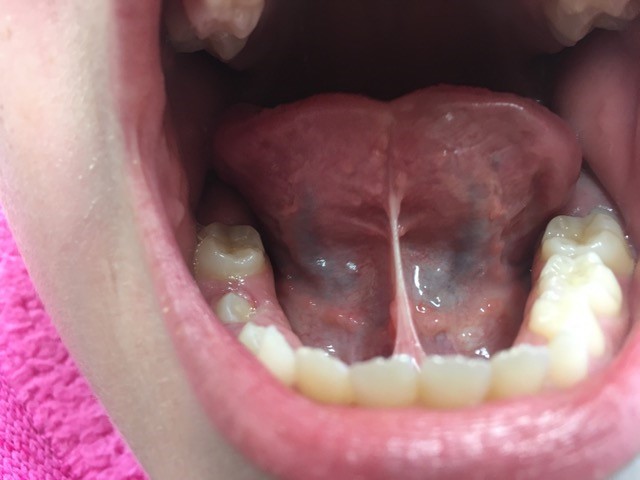
Tongue-tie is often identified in newborns during their initial checkup or in routine followup checkups. While it's sometimes not as easy to spot, if left untreated tongue-tie can lead to oral cavity issues.
Tongue-tie or ankyloglossia is a condition in which there is a thin tissue (frenum) under the tongue that is attached to the bottom of the mouth and limits the tongue's movement.
"If a newborn has tongue-tie, they will have trouble latching during breastfeeding. But sometimes, the tongue-tie is not that severe and goes unnoticed, until later on," says periodontist and assistant professor Monica Gibson. "This is when you notice that children develop lisps or other speech impediments."
Clicking sounds or sucking in of the cheeks while nursing could also be symptoms of tongue-tie in newborns. However, Gibson says to keep in mind that just because a newborn has trouble latching doesn't always mean it is because they are tongue-tied.
"We ask parents to see their family doctor, pediatrician, dentist or periodontist to rule out tongue-tie as soon as possible," says Gibson. "The treatment is simple, fast and easily done. It's an easy issue to correct and can have significant implications if left untreated."
Some of these issues include speech delay, gaps between the teeth and problems latching during breast feeding.
Frenum
In adults, instead of tongue-tie, a high frenum attachment can occur. This is when the muscle is attached closely to the teeth in either the upper or lower jaw.
"Early detection and treatment of abnormal frenum attachments by visiting your dentist or periodontist is always advised to avoid any gum loss or tooth root exposure," says Gibson.
If left untreated, a tongue-tie can lead to the following issues:
- Reduced oral hygiene; increased risk of caries and bad breath. Saliva is unable to sweep away food
- Poor weight gain due to impacted feeding or eating
- Speech alteration
- Difficulty in pronunciation
- Difficulty in chewing food
- Inability to swallow normally, which may also create future orthodontic problems like open bite and crowded teeth
If left untreated, abnormal or high frenum attachment can lead to the following issues:
- Gum recession due to excessive pull of the muscle/frenum
- Lack of attached gums (gingiva) in this area due to recession
- Root exposure of the teeth
- Higher risk of root caries
- Diastema or gap between teeth
- Difficulty brushing in those areas leading to plaque
accumulation